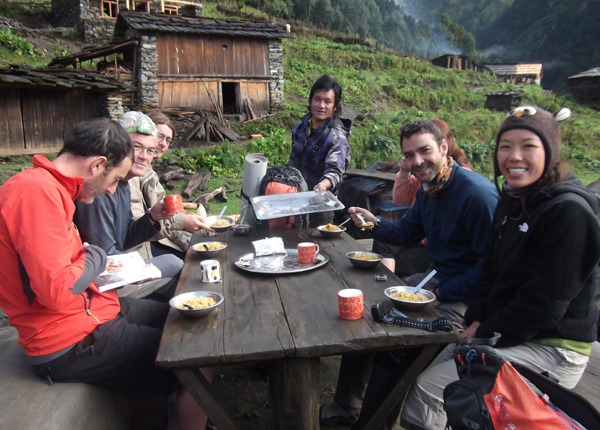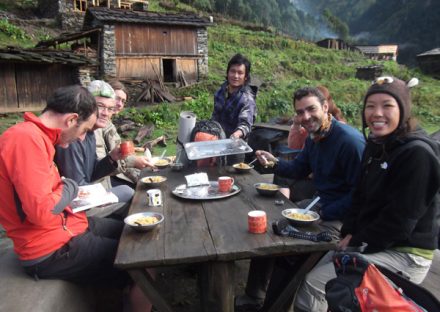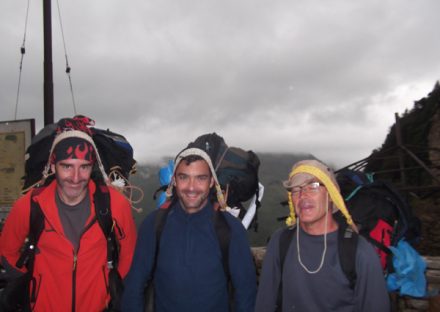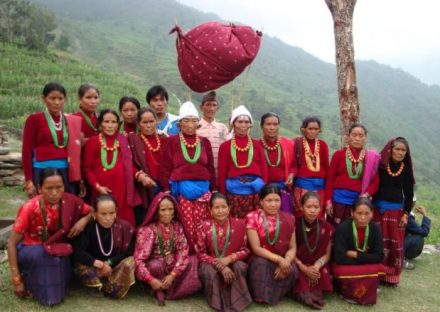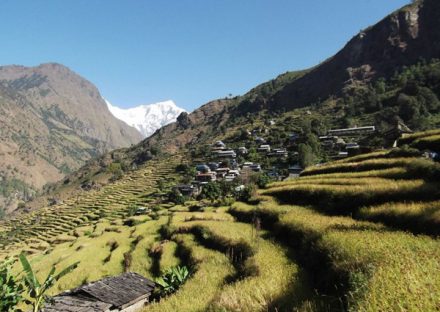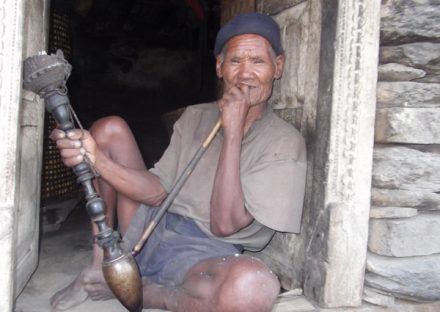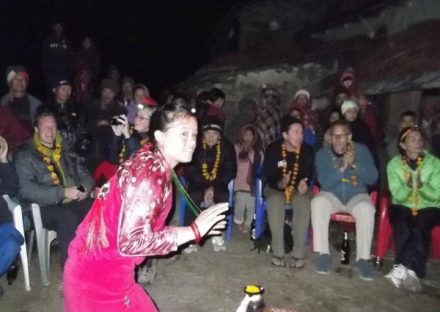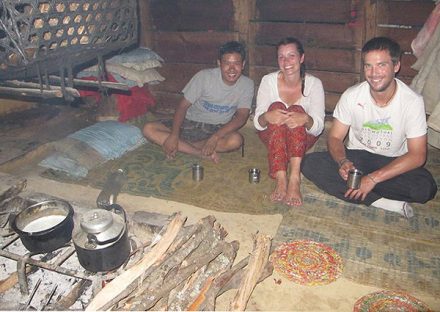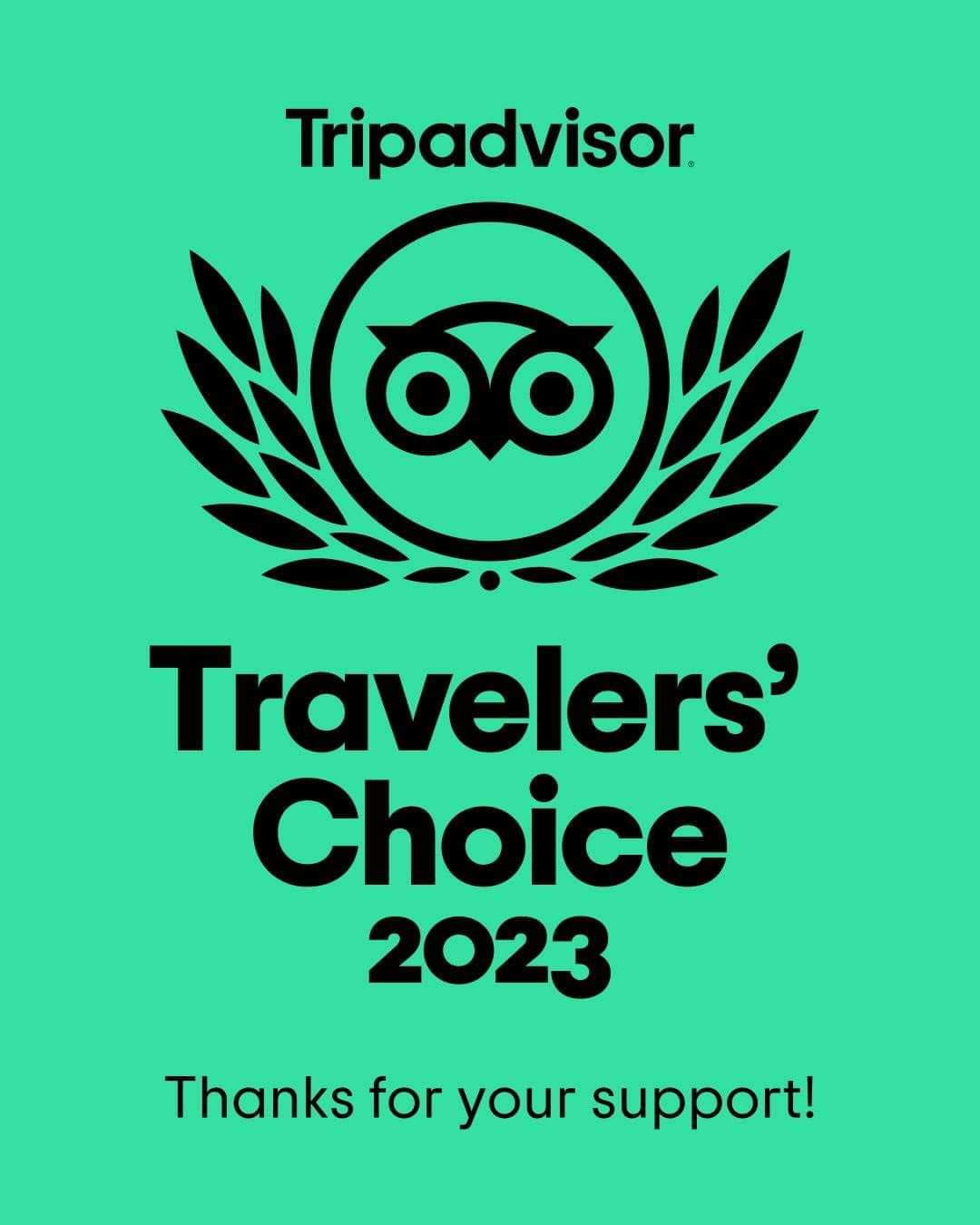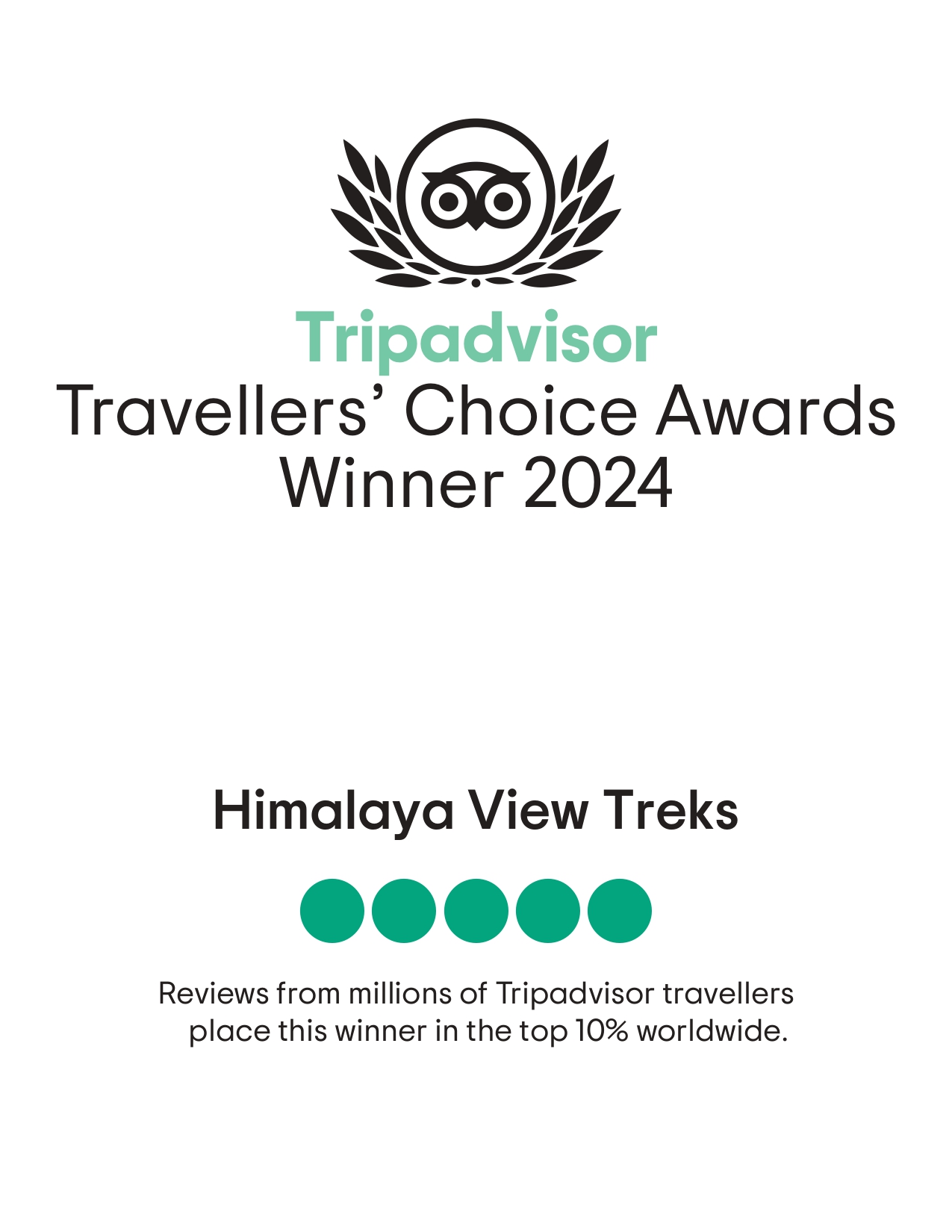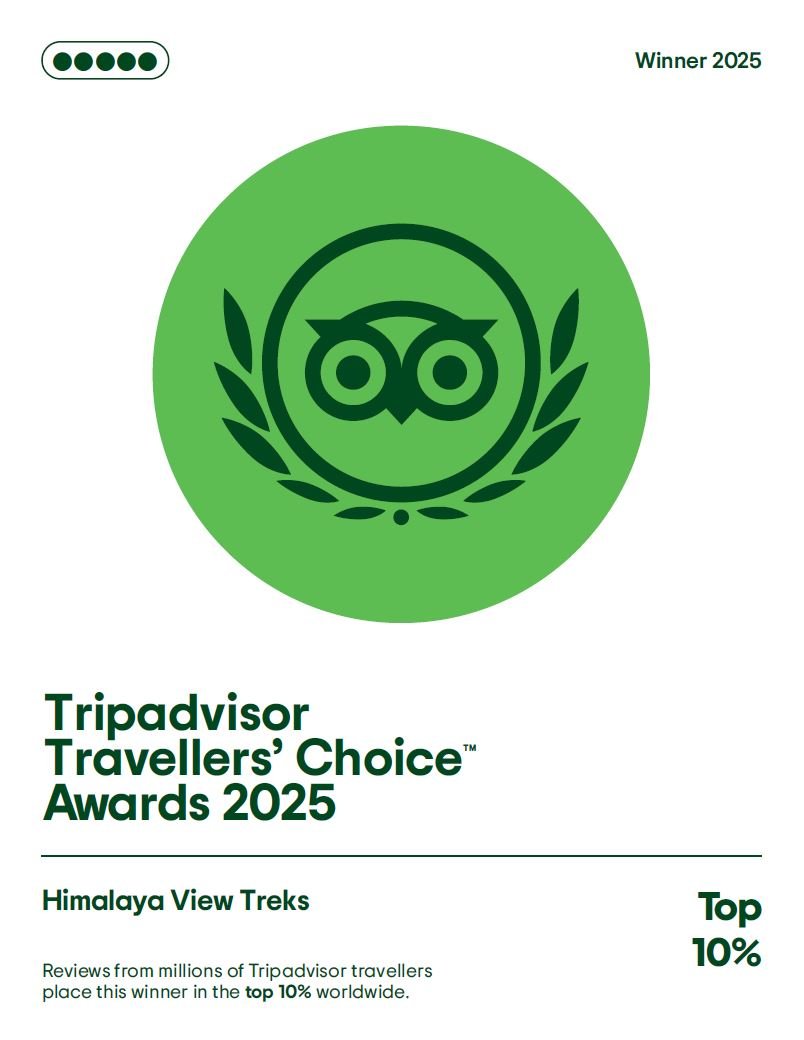Trip overview
Ruby Valley Trek – The Best Choice for Budget Travelers
The Classic Ruby Valley Trek is one of the last untouched and remote trekking routes in Nepal, making it a perfect option for budget and homestay travelers. This trek can be completed in 8 days from Kathmandu to Kathmandu, offering a unique combination of cultural immersion and natural beauty.
Unlike other popular trails, the Ruby Valley route provides authentic village-to-village cultural trekking that is difficult to find elsewhere in Nepal. The trek begins in Dhading District and ends in Syabrubesi, Rasuwa District—which is also the starting point of the Langtang Valley Trek. Nestled in the Ganesh Himal region, Ruby Valley is considered the cheapest trekking destination in Nepal, ideal for those seeking a budget-friendly adventure just 10 days from your home country.
This hidden valley is renowned for its diverse culture and stunning landscapes. The trekking route passes through three high passes, the Ruby Valley itself, and three sacred lakes (Kunda) of the Ganesh Himal region. Along the way, you will encounter villages of Tamang, Gurung, Chhetri, and Brahmin communities, each offering a glimpse into their rich traditions, warm hospitality, and way of life.
Why Choose the Ruby Valley Trek?
The Village-to-Village Classical Ruby Valley Trek is one of the best homestay experiences in Nepal, offering both cultural insights and natural highlights:
- Traditional Buddhist monasteries and Hindu temples
- Serene mountain lakes and sacred ponds
- Magnificent views of Annapurna, Langtang, Ganesh Himal, and Manaslu ranges
- Rare herbal plants, a local cheese factory, and even traditional ruby and zinc mines
- Diverse wildlife including Himalayan thar, ghoral, barking deer, red panda, snow leopard, bear, wolf, musk deer, pheasants, and monkeys
- Beautiful forests of rhododendron and other alpine vegetation
This trek combines natural wonders with deep cultural interaction, making it one of the most rewarding budget-friendly trekking routes in Nepal.
A Perfect Homestay Adventure
If you are a budget traveler looking for a homestay trek, the Ruby Valley is an excellent choice. During this journey, you will pass through traditional villages such as:
- Darkha Village
- Jharlang Village
- Borang Village
- Sertung Village
- Chalish (Gurung Village)
- Somdang Village
- Gatlang Village (a typical Tamang settlement)
In these villages, you will enjoy local hospitality, organic foods, traditional honey, and homemade wine, while learning about diverse cultures and lifestyles.
After a short drive from Kathmandu to Dhading, the trek begins and gradually unfolds through scenic valleys and hilltop settlements. Crossing the Pangsang La Pass, you will descend into Somdang Village, where you can also explore the Lari metals and ruby mines. The trek finally ends at Syabrubesi, a vibrant Tamang village and gateway to Langtang.
Ruby Valley Trek with Himalaya View Treks within Ruby valley rural municipality
Himalaya View Treks (HVT) has designed a short 8-day Ruby Valley trek itinerary that covers all the key villages and highlights of the region in the minimum required days. The trek can also be done in reverse, starting from Syabrubesi.
HVT provides:
- Experienced, knowledgeable guides
- Comfortable local accommodations and homestays
- Nutritious local meals
- Insightful cultural exchange with local communities
The Ganesh Himal Ruby Valley Trek is a romantic, cultural, and scenic journey—perfect for travelers seeking an authentic experience away from the crowds within Ruby Valley rural municipality.
Short Itinerary
Ruby Valley Trek – 8 Days Itinerary
Day 01: Drive from Kathmandu to Dhading Besi (850m) and trek to Darkha Village (850m) – 6 to 7 hours
Your journey begins with a scenic drive from Kathmandu to Dhading Besi, the district headquarters. From there, you continue towards Darkha Village, where the trek officially starts. This village offers the first taste of rural life and local homestay hospitality.
Day 02: Trek from Darkha to Jharlang Village (1,500m) – 6 hours
The trail passes through terraced farmlands, rivers, and small settlements. Today’s destination, Jharlang, is a traditional Tamang and Chhetri village with unique culture and lifestyle. You’ll enjoy local meals and learn about traditional farming practices.
Day 03: Trek from Jharlang to Chalish / Borang Village (1,800m) – 6 to 7 hours
Today’s trek offers stunning views of the Ganesh Himal range. You will reach Chalish and Borang, Gurung-majority villages known for their warm hospitality, organic food, and traditional dance and music. This is a perfect stop for a rich cultural experience.
Day 04: Trek from Chalish to Sertung Village (1,950m) – 5 hours
A gentle climb leads you to Sertung Village, inhabited mostly by Tamang people. The village is surrounded by beautiful landscapes and offers spectacular views of Ganesh Himal. It is also one of the most culturally rich stops of the trek.
Day 05: Trek from Sertung to Somdang via Pangsang La Pass (3,850m) – 7 hours
This is one of the most adventurous days of the trek. You will cross the high Pangsang La Pass (3,850m), which rewards you with panoramic views of Annapurna, Langtang, Ganesh Himal, and Manaslu ranges. After enjoying the scenery, you descend to Somdang Village, known for its historic Lari metals and ruby mines.
Day 06: Trek from Somdang to Gatlang Village (2,200m) – 6 hours
From Somdang, the trail descends through forests and small settlements before reaching Gatlang, a typical Tamang village. Gatlang is famous for its traditional stone houses, cultural dances, and scenic location.
Day 07: Trek from Gatlang to Syabrubesi (1,460m) – 6 hours
The final day of trekking takes you downhill to Syabrubesi, a lively town that is also the starting point of the Langtang Valley Trek. This is the perfect place to relax, enjoy local food, and celebrate the completion of your Ruby Valley journey.
Day 08: Drive back to Kathmandu – 7 to 8 hours
After breakfast, you take a scenic drive back to Kathmandu. The journey winds through terraced hills, rivers, and small towns, offering one last glimpse of rural Nepal before returning to the city.
Included
- Kathmandu toDhading bensi Bu bus and Dhading To Disang khola by sharing jeep. and Syabrubensi to kathmandu by bus.
- All meals (Breakfast, lunch, and dinner) during your Ruby Valley Trek with 7 night Hotel Accommodation.
- Government licensed holder, fluent English Speaking, Ganesh Himal Familiar Himalaya view Treks guide, 1 assistant guide if Group sizes is more than 10 trekkers) one guide lead up to 10 trekkers.
- Strong local Porters for Carry trekker’s luggage. One porter every 2 trekkers, Porter carry maximum 20 Kg. 10 Kg per trekkers.
- Cost Includes Guides and porters meals, accommodation, Salary, insurance, transportation, and needed equipment for the Trekking
- Water purification drop or tablets for safe drinking water.
- ACAP permit fee and TIMS card permit
- Seasonal fresh fruits after Dinner
- Local government, taxes, including official Service Charge.
- Himalaya View treks T-shirt as a Souvenirs, and duffle bag if needed.
Not Included
- Hotel accommodation In Kathmandu.
- Meals in Kathmandu, before Trek as well after the Trek.
- Personal expense (shopping, snacks, boil bottle water, hot (tea, coffee) and cold drinks, hot shower, alcohol, Wi-Fi, telephone call, battery charge fee during the Ruby valley Trek)
- Personal clothing and trekking gear
- Personal travel insurance including evacuation coverage (compulsory) up to 6000m)
- Additional costs if delays flights and outside the itinerary
- All the costs and expenses which are not mentioned in includes list.
- Tips for guide and porters. in end of the treks
Useful Info
Useful Information – Ruby Valley Trek
Best Season to Trek
The best time for the Ruby Valley Trek is during spring (March to May) and autumn (September to November).
- Spring: Clear skies, blooming rhododendrons, and moderate temperatures.
- Autumn: Stable weather, crystal-clear mountain views, and cultural festivals.
- Winter (Dec–Feb): Trekking is possible but colder at higher elevations.
- Monsoon (Jun–Aug): Trails may be muddy and slippery, but the landscapes are lush and green.
Accommodation
The Ruby Valley Trek is mainly a homestay trek. Villages like Darkha, Jharlang, Chalish, Sertung, Somdang, and Gatlang offer basic but authentic village homestays with traditional Nepali meals. This makes it one of the cheapest trekking routes in Nepal, while providing a unique cultural immersion.
Food and Drinks
- Expect Dal Bhat (rice, lentil soup, vegetables), seasonal greens, noodles, momos, and local organic produce.
- Villages also offer homemade wine, honey, and yak cheese.
- Bottled water is available in some villages, but carrying a water purification tablet or filter is recommended.
Difficulty Level
The Ruby Valley Trek is considered a moderate trek.
- Daily walking: 5–7 hours on average.
- Maximum altitude: Pangsang La Pass (3,850m).
- Suitable for beginners with a reasonable fitness level.
- No technical climbing required.
Permits Required
- No special trekking permit is required for Ruby Valley.
- You will need a TIMS card (Trekkers’ Information Management System).
- Langtang national park Entry fees may apply for local conservation areas along the route.
Transportation
- Start Point: Drive from Kathmandu to Dhading Besi (approx. 5–6 hours).
- End Point: Drive from Syabrubesi back to Kathmandu (approx. 7–8 hours).
- Local buses and private jeeps are available for both routes.
Highlights at a Glance
- Authentic homestay trekking experience
- Pangsang La Pass (3,850m) with panoramic Himalayan views
- Visits to ruby and zinc mines near Somdang
- Villages of Tamang, Gurung, Chhetri, and Brahmin communities
- Beautiful forests, rhododendrons, and diverse wildlife including red pandas and Himalayan thar
- Stunning views of Ganesh Himal, Langtang, Manaslu, and Annapurna
Travel Tips
- Carry cash (Nepali Rupees), as ATMs are not available in villages.
- Pack warm clothes for higher altitudes, especially for Pangsang La Pass.
- A sleeping bag is recommended, as blankets in homestays may not be enough in colder months.
- Travel insurance with trekking coverage is highly recommended.
- Go with a local guide for safety, cultural insights, and navigation, as trails are less marked compared to popular regions.
The Ruby Valley Trek is the best choice for budget and cultural travelers who want to experience authentic Nepali village life while trekking through breathtaking Himalayan landscapes.
FAQs
-
How difficult is the Ruby Valley Trek?
The Ruby Valley Trek is considered a moderate trek. It does not involve technical climbing, but trekkers should be prepared for 5–7 hours of walking daily and crossing the Pangsang La Pass (3,850m). A reasonable level of fitness is enough to complete this trek.
-
How long does the Ruby Valley Trek take?
The standard itinerary is 8 days from Kathmandu to Kathmandu. However, it can be shortened or extended depending on your route and pace. Some trekkers also combine it with parts of the Langtang or Tamang Heritage Trek.
-
What is the maximum altitude of the trek?
The highest point of the Ruby Valley Trek is the Pangsang La Pass (3,850m), which offers panoramic views of Ganesh Himal, Langtang, Annapurna, and Manaslu ranges.
-
Do I need a special permit for Ruby Valley?
No special trekking permits are required for Ruby Valley. However, trekkers need a TIMS card (Trekkers’ Information Management System) and may have to pay Langtang national park entry fees along the route.
-
What kind of accommodation is available?
The Ruby Valley Trek is mainly a homestay trek. You will stay in local village homes with basic but clean rooms. This provides a unique opportunity to experience authentic rural Nepali life, taste local foods, and interact with host families.
-
Is the Ruby Valley Trek suitable for budget travelers?
Yes, Ruby Valley is one of the cheapest trekking routes in Nepal because it relies on homestays instead of expensive lodges. Food and accommodation are affordable, making it perfect for budget and cultural travelers.
-
What is the best time to trek Ruby Valley?
The best seasons are: Spring (March–May): Blooming rhododendrons, clear skies, and moderate weather. Autumn (September–November): Stable weather, clear views, and vibrant festivals. Winter (Dec–Feb): Possible but colder at higher elevations. Monsoon (Jun–Aug): Trails can be muddy, but villages are lush and green.
-
How do I get to the starting point?
The trek begins with a drive from Kathmandu to Dhading Besi (approx. 5–6 hours) and then continues to Darkha Village. The trek ends at Syabrubesi, from where you drive back to Kathmandu (7–8 hours). Local buses and private jeeps are available.
-
Do I need a guide or porter?
While the trek can be done independently, hiring a local guide or porter is highly recommended. The route is less developed and not as well-marked as popular treks, so a guide ensures safety, navigation, and cultural insights.
-
What is the cost of the Ruby Valley Trek?
The Ruby Valley Trek is very affordable compared to other treks in Nepal. On average, the cost ranges from $450–$700 per person for 8 days, depending on group size, services, and whether you include a guide/porter.

